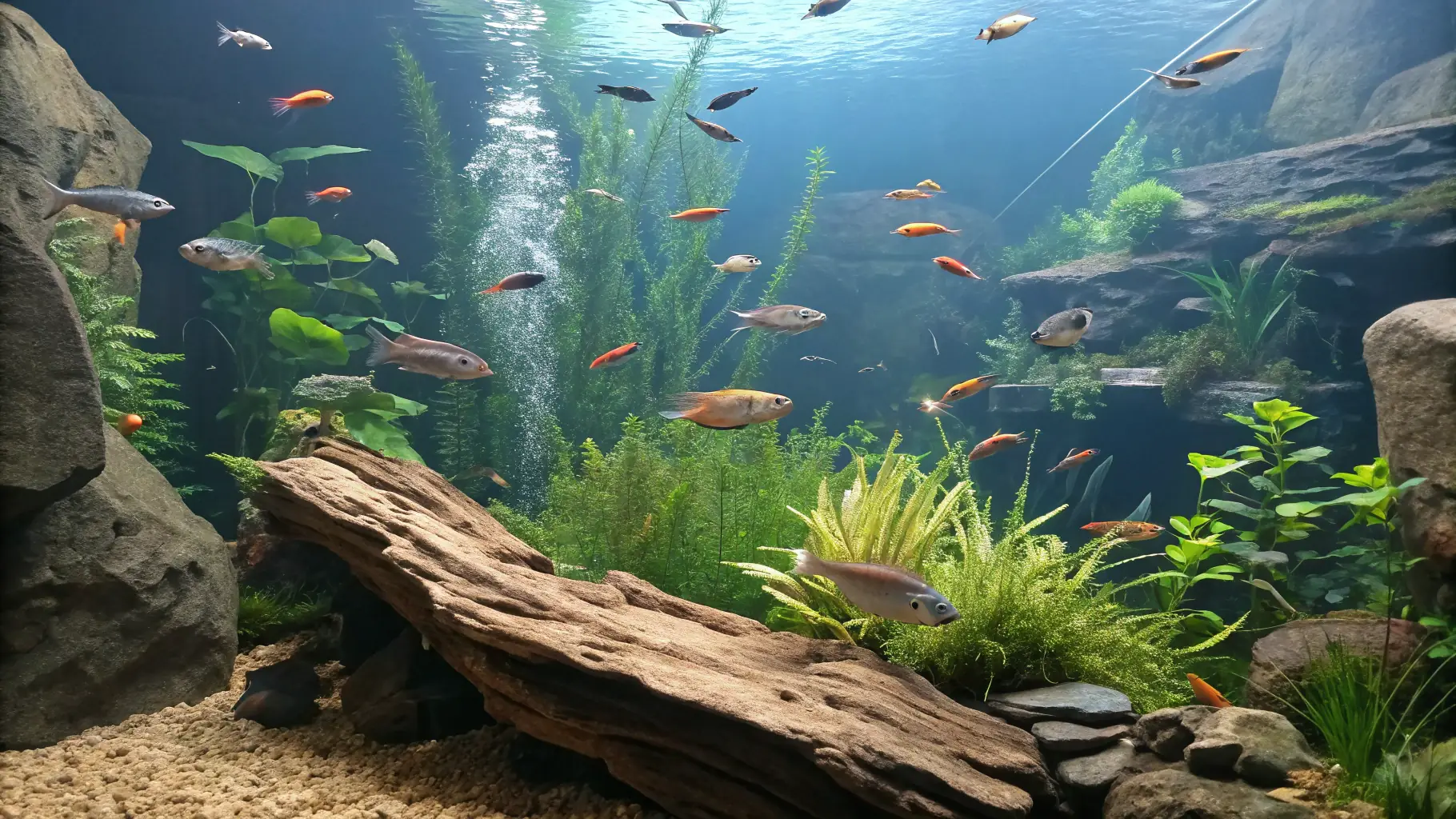Quick & Easy
Calculate Your Aquarium Volume
Need to know the volume of your aquarium? Our calculator makes it simple! Just enter the dimensions and get instant results. Perfect for dosing medications, setting up new tanks, and more. Click the button below to get started!

Using the Aquarium Volume Calculator
To use the Aquarium Volume and Heater Calculator, start by entering your tank’s length, width, and height, making sure to select the correct units from the dropdown menus. If you’d like a heater recommendation, enable the heater option and enter your room temperature along with your desired tank temperature. When you click “Calculate”, the tool will display the total volume of your aquarium in both liters and US gallons. If the heater option is enabled, it will also recommend the ideal wattage and show you suitable product suggestions based on your tank size. Keep in mind that the calculated volume assumes the tank is filled to the very top — your actual water volume may be lower depending on how full you keep your tank and any decorations or substrate inside.
-
-
Enter Your Tank’s Dimensions
Input the length, width, and height of your aquarium. You can use centimeters (cm), millimeters (mm), inches (in), or feet (ft) — just make sure to select the correct unit from the dropdown menu.Note: For greater accuracy, it’s recommended to enter the actual water level (fill line) rather than the full tank height. Also, consider including the volume of any filters, sumps, or external equipment connected to the system.
-
Enable Heater Recommendations (Optional)
If you’d like suggestions for heater wattage, simply check the box provided.Heater recommendations are based on products available on Amazon UK. If you're outside the UK, use the same wattage guidelines to find similar heaters in your country.
-
Click “Calculate Volume”
Once all details are entered, click the Calculate Volume button.
You’ll see your aquarium’s estimated volume in litres, along with the recommended heater wattage (if selected).
-
1. Why is the calculated volume higher than what my tank actually holds?
The calculator estimates the maximum theoretical volume, assuming your tank is filled completely to the top. In reality, the usable water volume is lower due to air gaps, substrate, decorations, filters, and not filling all the way to the rim.
2. Which units should I use for measurements?
You can use centimeters (cm), millimeters (mm), inches (in), or feet (ft) — just make sure to select the correct unit from the dropdown for each dimension to ensure an accurate result.
3. How accurate is the heater recommendation?
The recommended heater wattage is based on general guidelines (typically 0.5–1 watt per liter, we go with a 1 watt per liter ratio to be on the safe side).
Keep in mind:
-
Cold rooms or open-top tanks may need more powerful heaters
-
Always use a reliable aquarium thermometer to verify actual temperatures
4. Can I use more than one heater?
Absolutely. For larger tanks, using two heaters is often better because it:
-
Distributes heat more evenly
-
Provides a backup in case one fails
-
Maintains more consistent temperatures
5. Why is the calculator suggesting a controller?
Some heaters (like titanium or inline models) lack built-in thermostats. A temperature controller (e.g., Inkbird ITC-306A) is recommended to:
-
Maintain a steady temperature
-
Prevent overheating
-
Add safety alerts if the tank gets too hot or cold
6. What if my tank includes a sump or external filter?
If your sump or filter holds water that circulates with the main tank, include that volume in your total.
You can either:
-
Measure the sump separately and add it manually, or
-
Use a combined system volume if known
7. Should I fill my tank all the way to the top?
No — it’s better to leave a few centimeters of space to:
-
Prevent water spilling over
-
Allow for proper surface agitation and gas exchange
As a general guideline, subtract about 10–15% from the total volume for a more realistic working water level.
-
Always measure the actual water level, not just the tank’s full height — this gives a more realistic volume estimate.
-
Account for displacement from substrate, rocks, driftwood, and decorations — they reduce total water volume.
-
Measure your sump or external filter separately and include it if it’s part of your water system.
-
For large tanks, consider using multiple heaters for even heat distribution and backup reliability.
-
Keep a thermometer in your tank to monitor actual temperature — don’t rely on heater settings alone.